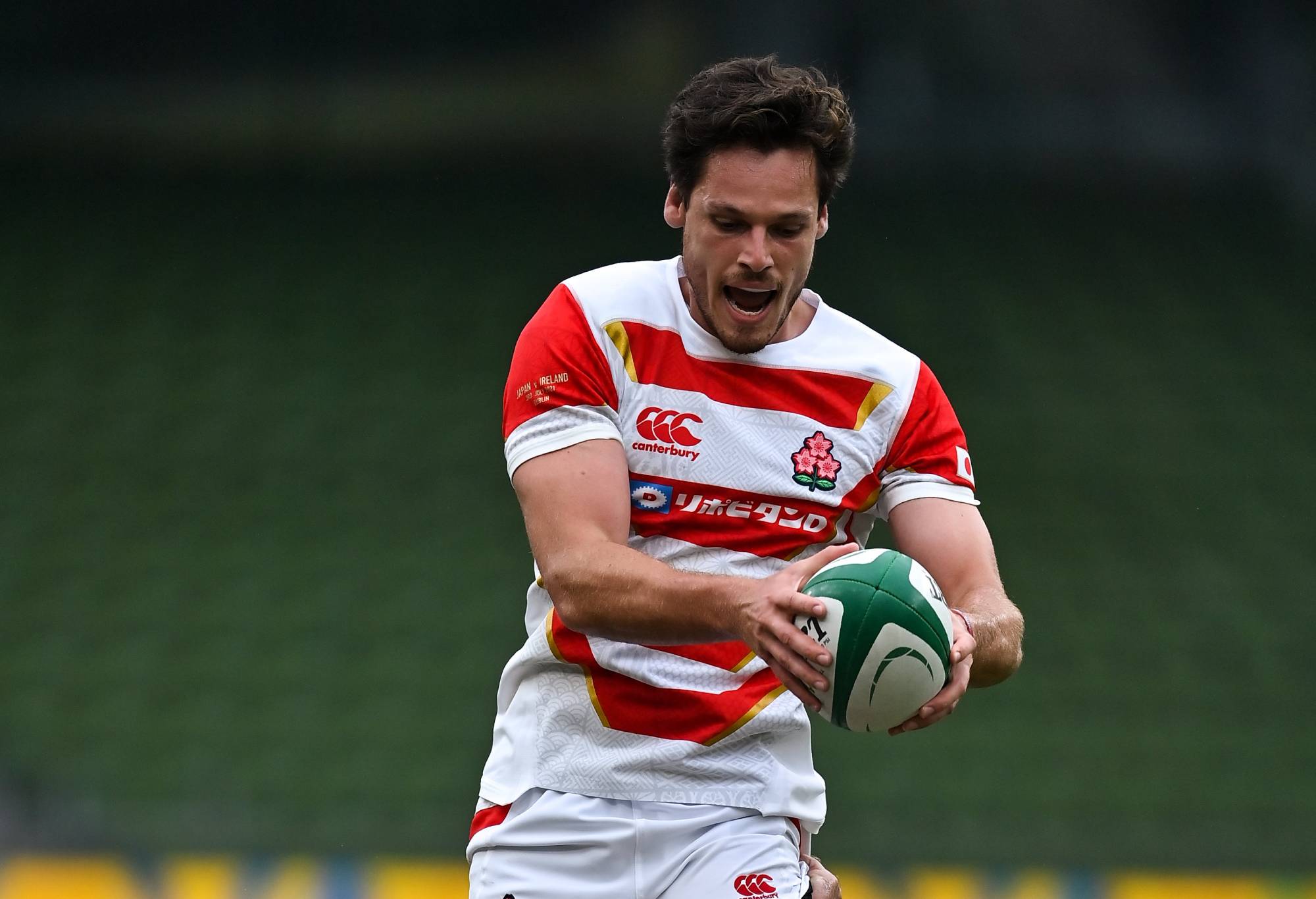There are 70 reasons why Australians, and in particular Rugby Australia, should be keeping close tabs on Japan Rugby League One when it kicks off this weekend.
There are 69 Aussie-born players who feature across the competition’s three divisions including 14 Wallabies (listed below).
It’s one short of a starting XV, although you could fill up the roster if you grabbed former Wallaby loose forward Wycliff Palu, who is head coach at Kurita Water Gush Akishima in the league’s third division.
The bruising ex-Waratahs No.8 (who I’m sure is still in pretty good nick physically!) is just one of a plethora of Aussies involved off the field in Japan Rugby League One too, whether coaching or guiding physical performance, utilising their intellectual property to the benefit of the clubs.
This includes Eddie Jones, of course, who has had a long-time and well-publicised association with Tokyo Suntory Sungoliath; the NEC Green Rockets Tokatsu’s Director of Rugby Michael Cheika; as well as the former Waratahs winger Peter Hewat, who is head coach at Ricoh Black Rams Tokyo.
While not strictly ‘Aussie’, you can add former Wallabies coach Robbie Deans to that group, with his expertise leading the Saitama Panasonic Wild Knights to five titles since he stepped up his association following the end of his time coaching Australia.
The benefits Australia is gaining from Japan Rugby League One, and its clubs, is significant.
The players who come back to play for the Wallabies return in great shape, which shows in their performance, while in many cases their ability has improved. Andrew Kellaway and Jed Holloway are examples, making the Wallabies after time in Japan.
Marika Koroibete told international media prior to his man-of-the-series performance in the mid-year Tests against England that he is a better player after working on the finer points of his game with tutelage from Deans.
He’s not the only Australian who has thrived at Japan’s two-time defending club champions. Deans brought utility forward Jack Cornelsen, loose forward Ben Gunter, and impressive centre Dylan Riley to Japan, after they had each hit a brick wall in the Australian high-performance system.
All three are now Brave Blossoms, after meeting the required residential qualification.

Jack Cornelsen of Japan (Photo By Brendan Moran/Sportsfile via Getty Images)
Riley showed what the Wallabies missed out on by proving a handful for the All Blacks during October’s Test.
The former Aussie Under-20s rep was also the equal top try-scorer in the maiden edition of Japan Rugby League One, edging Israel Folau by two.
The increasing Aussie diaspora, along with the strong South African and New Zealand, and ever-growing international contingents, are raising the club standard in Japan rapidly.
While this is important for the game globally, as it seeks to broaden the competitiveness of test rugby, it also why reason number 70 is so significant, and a great opportunity for Australia.
Japan Rugby League One bosses aren’t hiding their ambition to provide cross-border opportunities for their clubs.
This is often mistaken as a desire to return to Super Rugby, but while a more extensive form of regular round-robin competition could be a possibility in the future – just as the advent of the six-team South Pacific championship in 1986 was the forerunner to Super Rugby a decade later – Japan recognises the need for baby steps.
Besides, it has just formed and is rapidly developing its own streamlined high-performance league.
It need not have its best teams joining another.
Where the opportunity lies for Australia is in some form of post season cross-border club competition.
Perhaps the top two Australian Super Rugby entrants, and Japan’s finalists, could play each other in straight semi-finals and a final.
Two weeks, and nice and easy, while adding something fresh and exciting to the club calendar. It could easily be squeezed into the schedule – both competitions finish around the same time – and it would be easy to achieve logistically.
Each country could take turns hosting the three matches, sharing the commercial earnings 50/50. Such a concept would provide great exposure for each of the teams involved – and their corporate supporters – in the others’ market.
It would be exceedingly popular among the corporate backers of Japan’s clubs, who want commercial/marketing benefit from any foreign investment made through their rugby teams.
Perhaps the idea’s biggest beauty is that it’s only really adding to already-existing club relations between the two countries.
Each of the Reds, Rebels and Force played pre-season matches in Japan recently, as part of relationships with Saitama, Hanazono and Urayasu respectively. Some of these teams will be hosted in Australia next year.
And while the games were played minus the current Test stars – with the focus firmly on development – the Japan Rugby League One clubs still acquitted themselves well. Urayasu twice beat the Force during their visit to Tokyo.
The competitiveness of the Japanese clubs followed on from the recent Australia A visit, where all three matches against a Japan XV were close affairs watched by excited crowds, while providing an excellent standard of footy in a 2-1 series win for the Aussies.
To borrow an historical analogy, Japan’s new league is the rugby equivalent of the America Christopher Columbus discovered: a land of opportunity, waiting to be ‘discovered’ [at club level], for opportunities to be created and explored.
As is said in Latin:
“Carpe diem, quam minimum credula postero”
It’s time to “Seize the day [Australia], put very little trust in tomorrow”.
Japan Rugby League One’s Wallaby connection
Division One: Quade Cooper (Hanazono Kintetsu Liners), Will Genia (Hanazono Kintetsu Liners), Samu Kerevi (Tokyo Suntory Sungoliath), Sean McMahon (Tokyo Suntory Sungoliath), Bernard Foley (Kubota Spears, Funabashi, TOKYO-BAY), Nick Phipps (NEC Green Rockets Tokatsu), Taqele Naiyaravoro (NEC Green Rockets Tokatsu), Matt Toomua (Mitsubishi Heavy Industries Sagamihira Dynaboars), Isi Naisarani (Shizuoka Blue Revs), Marika Koroibete (Saitama Panasonic Wild Knights)
Division Two: Tom Banks (MIE Honda Heat), Rory Arnold (Hino Red Dolphins), Liam Gill (Urayasu D-Rocks), Israel Folau (Urayasu D-Rocks).





























































































